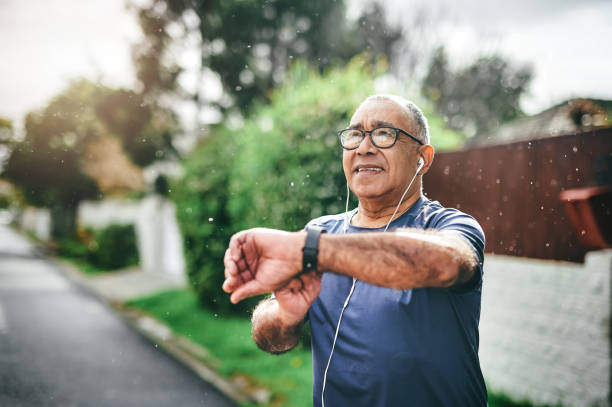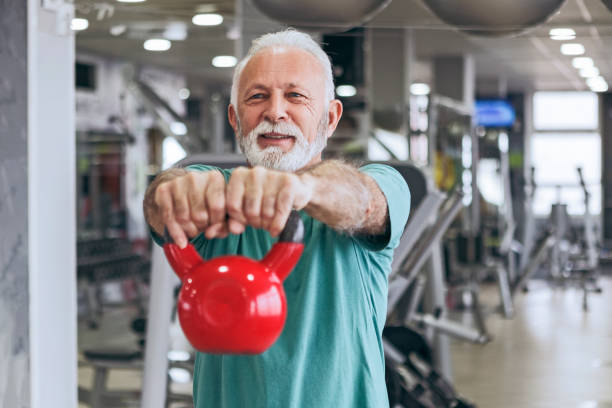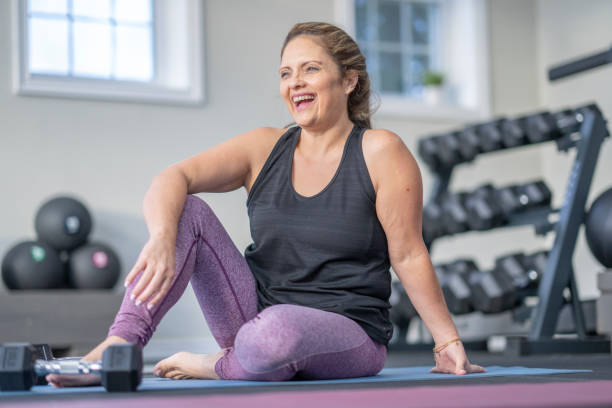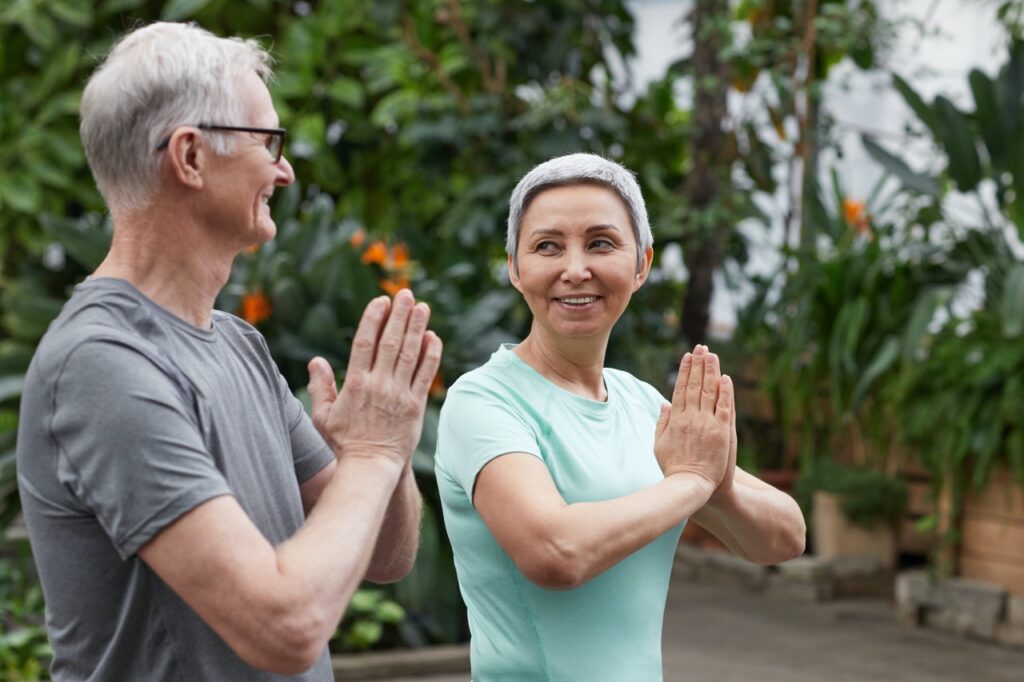Fitness Habits, Workouts
Which Functional Training Is Good For Seniors
Functional training helps seniors maintain their strength, mobility, and independence. As we get older, it becomes more vital to engage in physical activity that resembles the motions we do in our daily lives. Functional training focuses on exercises that increase balance, coordination, and flexibility, all of which are necessary for enjoying a great quality of life in our golden years.
There are various sorts of functional training that are appropriate for elders. Resistance training is one of the most popular methods for increasing strength and muscular growth. Resistance training has been demonstrated to be especially beneficial for seniors since it helps to reduce falls and improves bone density. Other types of functional training that are beneficial to seniors include yoga, Pilates, and Tai Chi, all of which focus on developing flexibility, balance, and coordination.

Understanding Functional Training for Seniors
As we get older, it becomes more crucial to maintain our health and quality of life. Functional training is one method for accomplishing this, as it focuses on exercises that replicate ordinary movements and activities. In this section, we’ll look at the benefits of functional exercise for aging bodies, as well as the fundamentals of functional training for older persons.
Benefits of Functional Exercise for Aging Bodies
Functional training has various advantages for elders, including increased balance, flexibility, strength, and endurance. Seniors can keep their independence by engaging in exercises that simulate ordinary movements.
Furthermore, functional exercise can assist elders avoid falls, which are a primary cause of injury and hospitalization. Seniors who improve their balance and coordination can lower their chance of falling while also maintaining their mobility.
Key Principles of Functional Training for Older Adults
When planning a functional training program for seniors, it’s crucial to remember the following basic principles:
- Individualization: Individualization is essential because each senior has distinct strengths and limits, thus the program must be tailored to their specific requirements.
- Progressive overload: As seniors’ strength and fitness improves, the program should be altered to keep them challenged.
- Multi-joint movements: Multi-joint exercises are more effective at improving functional fitness than solo motions.
- Balance and stability training: Improving balance and stability is critical for avoiding falls and staying mobile.
- Variety: Using a range of exercises and motions might help seniors avoid boredom and stay involved in the program.
Seniors who follow these essential principles can significantly enhance their functional fitness, resulting in a higher quality of life and increased independence.

Essential Functional Exercises for Seniors
Maintaining mobility, strength, and balance is critical as we age. Functional workouts are an excellent approach to accomplish these aims. Here are some key functional activities for seniors:
Squats and Variations for Lower Body Strength
Squats are an excellent workout for increasing lower-body strength. They target your glutes, quadriceps, hamstrings, and calves. To squat, stand with your feet shoulder-width apart and lower yourself as if you were sitting in a chair. Maintain your weight on your heels and avoid extending your knees beyond your toes.
If conventional squats are too difficult, consider chair squats. Stand in front of a chair, feet shoulder-width apart. Lower your body to the chair and then stand back up. This workout is less strenuous than traditional squats, yet it still trains the lower body muscles.
Lunges are another effective exercise for increasing lower-body strength. They target your glutes, quadriceps, and hamstrings. To lunge, take a stride forward with one foot and lower your body until your front thigh is parallel to the ground. Make sure your knee does not extend past your toes. Repeat with the opposite leg.
Upper Body Movements: Push-Ups and Rows
Push-ups are an excellent workout for increasing upper-body strength. They exercise your chest, shoulders, and triceps. To complete a push-up, begin in a plank posture with your hands shoulder width apart. Lower your body until your chest reaches the ground, then push back up. If ordinary push-ups are too difficult, try wall push-ups or push-ups with your knees.
Rows are another excellent workout for increasing upper-body strength. They train your back, shoulders, and biceps. To row, grasp a weight in one hand and lean forward at the waist. Keep your back straight and lift the weight up to your chest. Repeat with the other arm.
Core Stability and Balance Workouts
Core stability and balance are essential for maintaining proper posture and avoiding falls. Planks are an excellent workout for increasing core stability. To complete a plank, begin in a push-up position but instead of lowering your body, maintain a straight line from head to heels.
Balance exercises are also beneficial for avoiding falls. One simple exercise is to stand on one foot for 30 seconds before switching to the other. To increase the difficulty of the exercise, try standing on a pillow or cushion.
Finally, functional activities help seniors retain their mobility, strength, and balance. Include these key activities in your fitness program to stay healthy and active.

Designing a Safe and Effective Functional Training Routine
When developing a functional training routine regimen for seniors, it is critical to keep safety in mind. Incorporating functional strength training with weights can help build muscle strength and reduce falls, but it must be done safely. Here are some pointers to help you create a safe and effective functional training regimen:
Incorporating Functional Strength Training with Weights
Functional strength training with weights can assist seniors enhance their muscle strength, so improving their general health and lowering their chance of disability. However, it is critical to utilize weights suited for each person’s fitness level. Dumbbells are a popular choice for functional strength training due to their ease of use and diversity of weights.
When introducing weights into a functional training routine, it is critical to emphasize good form and technique. This can help prevent knee and hip injuries, which are prevalent problems among seniors. It’s also vital to start with lesser weights and progressively raise them as your strength increases.
Adapting Exercises for Individual Needs and Safety
When developing a functional training plan for seniors, it is critical to consider each person’s demands and limits. Some seniors may have mobility limitations or other health concerns that should be considered while choosing exercises.
To minimize the danger of injury, activities should be tailored to each individual’s fitness level and abilities. This can involve making exercises easier or using equipment like resistance bands to provide extra assistance.
In addition to tailoring workouts to individual needs, it is critical to practice effective warm-up and cool-down procedures. This can help elders avoid injuries and safely complete their functional exercise routine.
Overall, developing a safe and successful functional training plan for seniors necessitates careful consideration of each person’s specific demands and limits. Seniors can enhance muscle strength and minimize their risk of disability and falls by including functional strength training with weights and tailoring routines to their specific needs and safety concerns.

Integrating Functional Training into Daily Life
As we get older, it becomes increasingly crucial to retain our capacity to do daily activities comfortably. Functional training is a great technique for seniors to improve their overall fitness and quality of life. In this section, we will look at several activities that can be incorporated into daily life to enhance balance, prevent falls, and increase endurance.
Activities to Improve Balance and Prevent Falls
Falls are a major issue for elders since they can cause catastrophic injuries and loss of independence. Fortunately, there are numerous activities that can help improve balance and prevent falls. Examples include:
- Single-leg balance: Stand on one leg for 30 seconds before switching to the opposite leg. Repeat a few times.
- Heel-to-toe walk: Walk in a straight line, with the heel of one foot directly in front of the toes of the other.
- Backward walking: Move backward in a straight line, taking short steps and keeping your gaze front.
- Chair stand: Sit in a chair with your feet flat on the ground. Stand up and sit down a few times.
Building Endurance for Everyday Activities
Endurance is required for everyday tasks like walking, carrying groceries, and lifting objects. Here are some workouts to help develop endurance:
- Walking: Walking is a great technique to increase endurance. Begin with small walks, gradually increasing the distance over time.
- Stair climbing: Stair climbing is an efficient strategy to increase endurance and leg strength.
- Carrying groceries: Carrying groceries can be a wonderful workout. Begin with light bags and progressively increase their weight.
- Lifting: Lifting weights or utilizing resistance bands can help to increase endurance and general strength.
By incorporating these activities into our daily lives, we can enhance our balance, prevent falls, and increase our stamina for everyday tasks. Functional training is an excellent technique to maintain our capacity to conduct daily activities comfortably and independently as we age.
Conclusion
One key takeaway from this experience is the emphasis on movements that mimic real-life activities. Engaging in exercises that replicate daily motions, such as squatting, lifting, and reaching, has not only improved my physical capabilities but has also translated into increased independence in my daily routines.
Adopting functional training as seniors isn’t just about the physical gains; it’s about maintaining cognitive health and emotional well-being. The integration of coordination and cognitive tasks within the workouts adds a stimulating element, creating a holistic impact on both the body and mind.
In conclusion, discovering which functional training is good for seniors has been a journey of self-discovery and empowerment. It’s a testament to the fact that age should never be a barrier to staying active and vital. Whether it’s strength training, balance exercises, or mobility drills, functional training offers a roadmap to a more resilient, agile, and fulfilling life as we age.
Journey of self discovery


